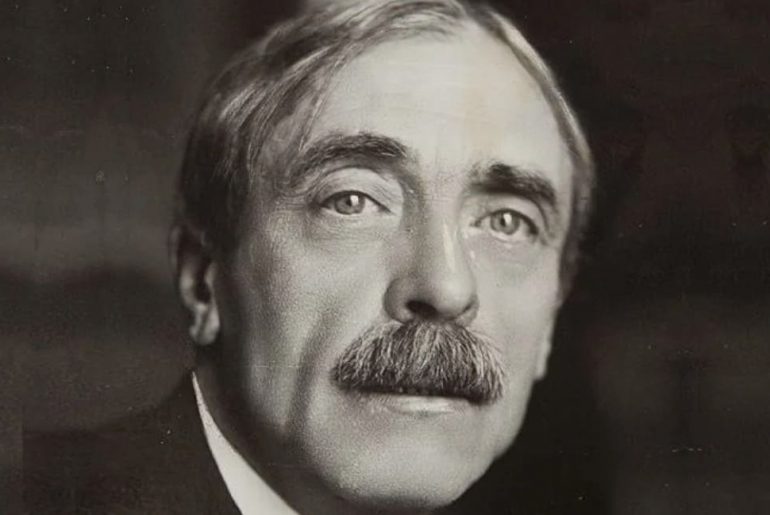(Paul Ambroise Valéry; Sète, 1871 – Paris, 1945) French writer. His poetic work, which continues the tradition of Mallarmé, is considered one of the most important works of French poetry of the 20th century. His essayistic work is that of a skeptical and tolerant man, who despised irrational ideas and poetic inspiration, and believed in the moral and practical superiority of work, conscience and reason.
He studied law in Montpellier, where he also published his first poems: “Dream”, in the Revue maritime (1889); “Elevation of the moon”, in Le Courier libre (1889); «The imperial march», in La Revue indépendante, and «Narcissus speaks», in La Conque (1891). His friendship with Pierre Louïs opened the doors of literary Paris, where he met André Gide and Stéphane Mallarmé (1891), with whom he would join a great friendship. His unrequited love for a certain Madame Rovira precipitated a crisis that led him, in 1892, to renounce poetry and devote himself to the exclusive cult of reason and intelligence.
In 1894 he settled in Paris, and the following year he published the philosophical essays An Introduction to the Method of Leonardo da Vinci and An Evening with Mr. Edmond Teste; the latter, which appeared in the magazine Le Centaure, was the first of a series of ten fragments in which he exposes the power of the mind entirely devoted to the observation and deduction of phenomena.
After working as a civil servant in the Ministry of War (1895), he was the private secretary of Édouard Lebey (1900-1920), one of the directors of the Havas agency. He gained great notoriety with the publication of the long poem La Joven Parca (1917), and two volumes of verses, Álbum de versos Antiguos (1920) and Cármenes (1922), which includes his poem El Cementerio Marino, considered the prototype of the « pure poetry» by Valéry. In 1925 he entered the French Academy.
His following works were prose dialogues: Eupalinos or the Architect (1923) and The Soul and the Dance (1923). Later he published a collection of essays and conferences (Variety, 5 vols., 1924-1944), and a series of works, such as Rhumbs (1926), Analecta (1927), Literature (1929), Miradas al mundo actual (1931), Bad thoughts and others (1941) and As is (1941-1943), considered Valéry’s intellectual diary. He was professor of poetics at the College de France (1937-1943).
He also wrote for the theater the ballets Amphion (1931) and Semiramis (1934), to which Arthur Honegger set music, and composed the libretto for La Cantata de Narcissus (1942), with music by Germaine Tailleferre. Posthumously appeared the drama My Faust (1946), and also Broken Stories (1950), Letters to some (1952), Correspondence with André Gide (1955), Descartes (1961) and, from 1956, the numerous volumes of his Notebooks.
https://youtu.be/ukjwY9TKNMw
What is Paul Valéry known for?
Valéry is best known as a poet, and he is sometimes considered to be the last of the French symbolists. However, he published fewer than a hundred poems, and none of them drew much attention.
How many poems Paul Valery wrote?
Valéry’s output as a poet was remarkably small—he produced little more than one hundred poems in total—and he only came to poetry relatively late in life, at the age of 46.
What is Valery’s point about Hamlet picking up Leonardo’s skull?
What is Valery’s point about Hamlet picking up Leonardo’s skull? Leonardo did not intend for his inventions to do harm.
Is Valery a Russian name?
Valéry or Valery is a masculine given name in parts of Europe (particularly in France and Russia), as well as a common surname in Francophone countries.
Is Valery a male or female name?
Valery is a gender-neutral name of Latin origin derived from the word valere, meaning “strong,” “healthy,” and “powerful.” This invigorating name is related to Valerie and has many unique variations, including Vallory, Valeria, and Valerian.





